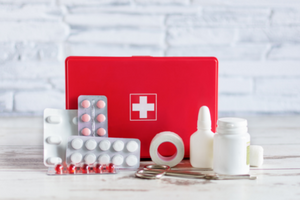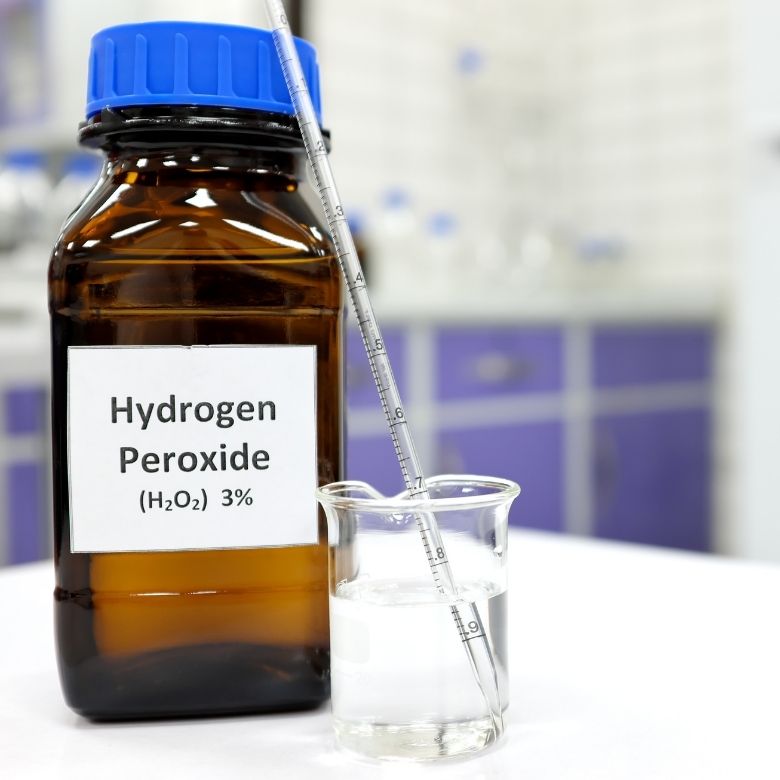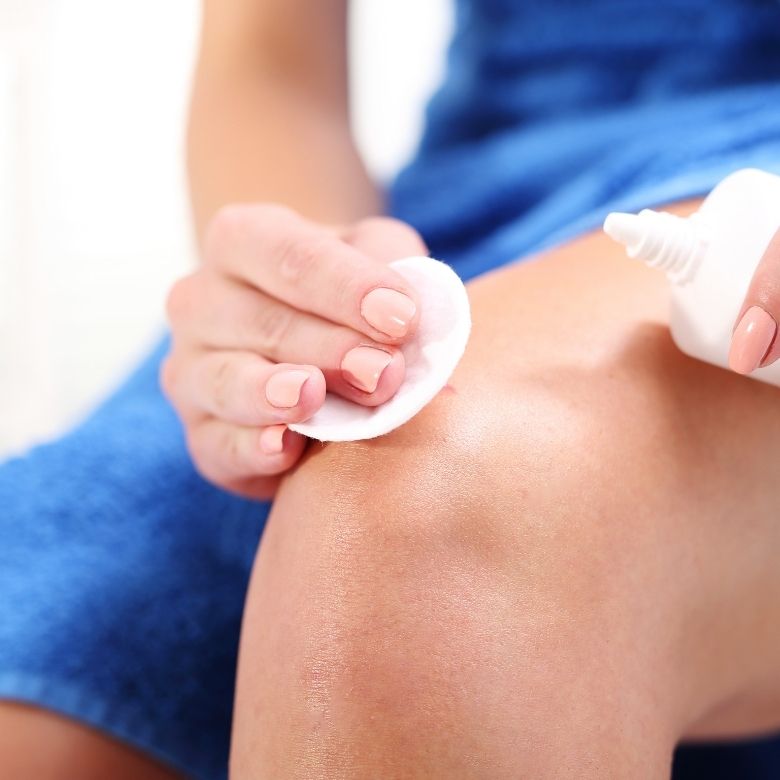The 3% hydrogen peroxide solution is one of the most popular and most commonly encountered substances. It is an important piece of equipment in a home first aid kit. Even though modern pharmacology has invented more effective means of disinfecting wounds, the 3% hydrogen peroxide solution still remains the product of choice for treating minor wounds or cuts.
Hydrogen peroxide has much broader and more common applications than just pharmacology, however. What is it? What are its applications? Is it actually effective? Find out in the following article.

What is hydrogen peroxide?
Hydrogen peroxide is a chemical substance that does not occur naturally. Most commonly it is used as a 3% solution that has very strong oxidising properties. This solution is occasionally also known as oxidised water.
Hydrogen peroxide causes degradation of proteins and mucous membranes. Applying a hydrogen peroxide solution to a wound causes the destruction of most common bacteria, which disinfects the wound. The problem is, the substance also has an adverse effect on cellular structures. Wound disinfection effectiveness is relatively high when using a substance like the 3% hydrogen peroxide solution. Treating wounds or skin damage by antiseptics does not cause damage to these structures to such a degree that they would be unable to rebuild themselves.

Effects of hydrogen peroxide and impact on the human body
The hydrogen peroxide present in the solution reacts with blood. This reaction causes oxygen to be released, which is why foam forms when you wash a wound.
Until recently it was believed that hydrogen peroxide significantly contributes to cleaning and disinfecting wounds, and additionally it ‘separates’ dirt and bacteria from the wounded area. Today we know that hydrogen peroxide cleans the wound and kills most of the bacteria, but disinfection by hydrogen peroxide has its drawbacks as well.
The antiseptic properties of hydrogen peroxide clearly indicate that the substance has an anti-bacterial effect. Nevertheless, its effects are not entirely unambiguous and the solution is not without harm to the skin and epidermis. Whole healthy cells of the body are destroyed just as effectively as microbes, bacteria and viruses. Hydrogen peroxide also does not speed up wound healing, so it is not recommended for disinfection of deep or large wounds.
Hydrogen peroxide effects on wound healing
Hydrogen peroxide has properties that cause impurities, bacteria, viruses, and other microbes to be separated and removed, but at the same time hinder wound healing. As we have said already, hydrogen peroxide can cause damage to the skin and epidermis, which prolongs the healing process. Localised festering or seepage from the wound is also very frequent. For this reason it is recommended to just wash the spot to be dressed once.
Hydrogen peroxide has many applications when it comes to disinfection, but it should never be used for treating burns. A negative effect will be irritation and inflammation of the wound, as well as further cell degradation, and therefore slower regeneration of burnt skin.
One should keep in mind that the 3% hydrogen peroxide solution retains its properties only for several days after it is opened. It is a basic mistake to store an opened hydrogen peroxide solution for many months. After this time, the substance will have lost all of its disinfecting properties.

Other applications of the 3% hydrogen peroxide solution
Hydrogen peroxide has numerous applications outside pharmacology. Most commonly, of course, it is used in the chemical industry, but if you have it at home, you can make use of it in other ways as well.
It is an excellent way to quickly and effectively bleach textiles and to clean and wash carpets. A small amount of the 3% hydrogen peroxide solution added to warm water allows rust or blood stains to be quickly removed.
Oxidised water is also used in the cosmetics industry (read about raw materials for cosmetics) or in the production of cleaning products. You can find out more about it in the continuation of the series of articles on hydrogen peroxide.
In the PCC Group offer you can also find other raw materials and chemicals for production of selected products for the above mentioned industries.
Is hydrogen peroxide fit for consumption?
Absolutely not. Hydrogen peroxide is corrosive and reacts powerfully when combined with blood. The 3% hydrogen peroxide solution must not be drank, nor should you use it to wash your mouth or throat. Drinking it can lead to very serious consequences, including mucous membrane damage, convulsions or dyspnea.
Hydrogen peroxide is a beneficial substance, but it is intended for external use only. According to latest research, drinking the 3% hydrogen peroxide solution may even lead to heart defects, respiratory tract defects, and to disruptions in the functioning of the internal organs. The effects could be serious health issues or even death! Hydrogen peroxide should therefore never be consumed in any quantities, despite its beneficial properties when used externally.
Hydrogen peroxide – worth using?
There is no unambiguous answer to this question. The 3% hydrogen peroxide solution is indeed characterised by desirable antiseptic properties that aid in wound disinfection and the removal of impurities. However, we must remember that its effects are not selective and it can damage healthy cells. For this reason it is well worth familiarising yourself with its properties and usage, so you can utilise it wisely.